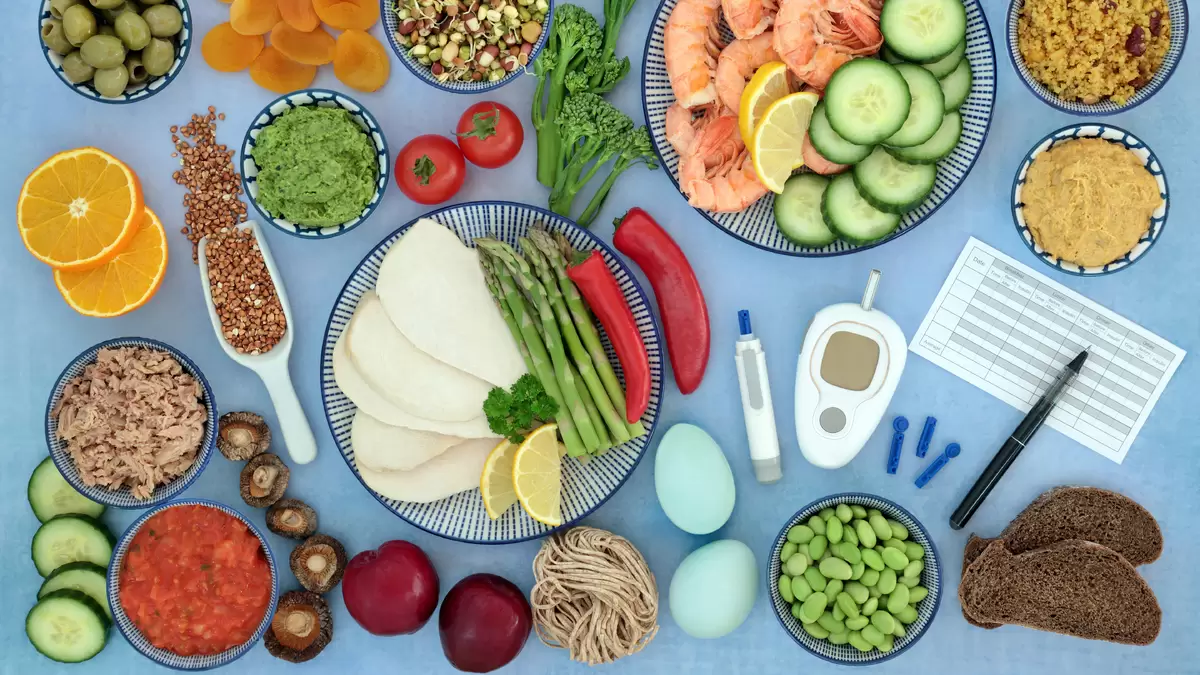Join Our Newsletter
Get our best recipes and health tips delivered right to your inbox!

Many people assume that following a low-carb diet for diabetics can lower the risk for diabetes. After all, if you cut out sugar in a low sugar diet and eat less flour, there should be less sugar in your blood, right? While this may be true, not all types of low-carb diets can reduce the risk for diabetes
Here’s some information about what constitutes a low-carb diet and how low carb- no sugar diet foods affect diabetes risk. We’ve also included links to low-carb gluten free recipes that can help keep blood sugar levels under control, whether you have diabetes or not.
Diabetes is a condition that causes too much glucose, or sugar, in the blood. This happens when the body does not properly use a hormone called insulin. Insulin helps convert sugar to energy and move it into cells, but when this process doesn’t work well, sugar builds up in the bloodstream, which can lead to health complications. That’s why many people believe a low-carb diet lowers diabetes risk.
There is a connection between eating a low-carb diet and diabetes, but it makes a difference what types of low carb foods you eat. A low-carb diet means eating fewer foods that contain a lot of carbohydrates. The most obvious types of carbohydrate-rich foods include those that contain sugar or flour, like bread, pasta, candy, and cookies. But carbohydrates are also found in natural foods such as fruits, vegetables, potatoes, rice, and other grains.
Carbohydrates break down into sugar, which can raise blood glucose levels. However, if foods with carbohydrates also contain fiber, as is the case with vegetables and whole grains, this conversion to sugar happens more gradually. A low-carb diet focuses on eating more high protein foods and healthy fats in place of carbohydrates and choosing complex carbohydrates instead of eating simple carbs. As with any type of diet, the types of food you eat can make a difference.
Studies suggest that low-carb diets may be beneficial for diabetes prevention by reducing the risk of type 2 diabetes. This is mainly because being overweight or obese is one of the biggest risk factors for developing diabetes and low-carb diets help promote weight loss. Eating fewer carbs may also help keep blood sugar levels more stable, another key factor in diabetes prevention.
However, it’s important to also consider the types of foods you eat when it comes to diabetes prevention. One recent study suggests that low-carb diets emphasizing plant-based foods, such as nuts, seeds, lentils and whole grains, may help lower diabetes risk more effectively than those that include a lot of animal-based foods, like red meat, cheese, and butter. That’s not to say that eating red meat is bad if you’re trying to prevent diabetes. But choosing leaner cuts of meat and limiting foods that are very high in saturated fat may help with weight management, which in turn helps lower diabetes risk.
If you want to eat fewer carbs, these are the best low carb foods for diabetics.
Read this article on low-carb diet guidelines and tips for more recipes and low carb foods for diabetics. And if you’re looking to lower carbs while increasing protein, you’ll love our collection of tasty and satisfying high protein recipes.
Looking for filling and satisfying low-carb recipes for diabetics and recipes to help lower your diabetes risk? Try these Low-Carb Diabetic Recipes.
If you’re looking for high-protein recipes that are low in carbs, be sure to also check these out:
And to finish off any meal with a flourish, don’t miss these 10 Dessert Recipes to Enjoy on a Low Sugar Diet!